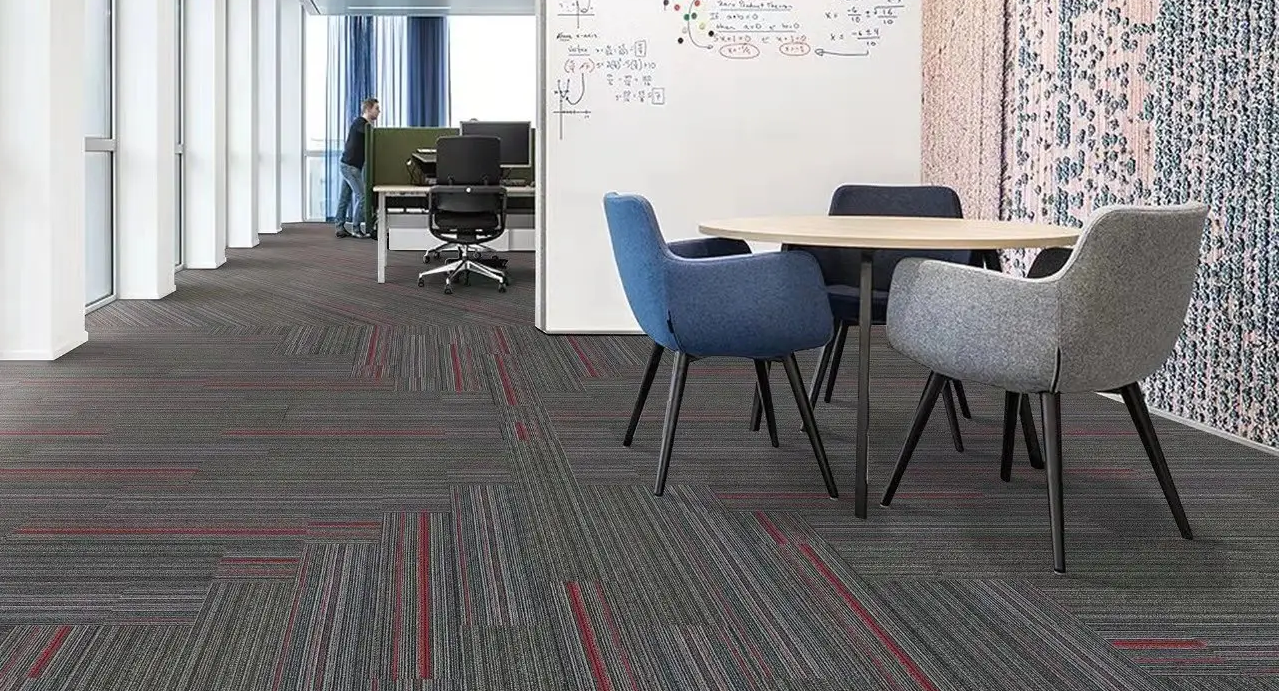NEWS TAG
brand
Flammability Standards of Carpets: How To Test the Flame Spread Rating Of Carpets?
The flammability of carpets plays an important decisive role in the flammability of the entire building. Carpets play an important role in the fire of a building, such as the spread of flames, the production of smoke, the generation of toxic gases, and combustion. The lower the flammability of interior textiles, such as carpets, the safer the entire building.

The fire safety of flooring depends not only on how easily the carpet can be ignited but also on how quickly the flame spreads and produces smoke.
What Factors Affect the Flammability of Carpets?
Wool carpets have natural fire retardant properties, and wool has better fire resistance than all other common textile fibers. The unique chemical structure of wool (e.g. wool's high nitrogen content (14%) and water content) gives wool superior flame retardant properties:
• High ignition temperature (570-600°C);
• High limiting oxygen index (20-25%), which is the minimum oxygen concentration required for continuous combustion of the flame, expressed as a percentage.
• Low thermal flammability;
• Low heat release;
• Combustion does not melt;
• Self-extinguishing;
• Formation of a layer of thermal insulation cold scorch ash when burned;
• Wool burns with less smoke and toxic gases than most synthetic fibers.
In the room, carpets are almost always the last household item to catch fire, and carpets can reduce the body's inhalation of smoke. Therefore, the fire department recommends that in the event of a fire, you should try to lie on the ground and crawl away from the burning building.
What Determines The Flammability Of Carpets?
Carpets are rarely a source of fire. In fact, all current performance standards require carpets to be self-extinguishing when caught on fire. Studies have proven that if a chair or similar item becomes the first and only item on fire in a room, it is almost certain that it will not cause the carpet to burn.
At present, there are many test standards for the flammability of carpets, and the following four main combustion manifestations have become the focus of testing:
• Ignition propensity and combustion tendency;
• Concentration of smoke from combustion;
• Toxicity of substances from combustion;
• The speed at which the flame spreads.
Several Test Methods Are Listed Below As Illustrations:
• ASTM E648 Radiant Panel Test - This combustion test standard specifies a basic evaluation standard for evaluating one aspect of the fire performance of paving materials in building aisles: flame ductility. The test method is to expose horizontally paved flooring material to a gas or air-fueled radiant heat source. The test sample is then ignited at the end of the high thermal radiation flux with a gas igniter, and then the position of the material is calibrated when it goes out on time. The thermal radiant flux at this location is the critical thermal radiation flux (CRF) that maintains flame propagation, expressed in watts per square centimeter (watts/cm2). The higher the CRF value, the better the fire resistance of the floor material.
• ASTM D2859 – 06 Test Method for Flammability of Finishing Textile Flooring Materials or Methylamine Tablets. This method is used to determine the influence of micro-ignition sources on finishing textile flooring materials. The Methylamine Tablet Test shows how long the paving material can be ignited by a tiny ignition source.
• ISO 5657:1997 Reaction to flame tests – Test methods for flammability of building products under radiant heat sources This standard specifies test methods for the flammability of materials, composites, or components up to 70 mm thick when placed horizontally under specified thermal radiation conditions.
• BS 4790 (Hot Metal Nut Method) can be used to determine the effect of micro ignition on all types of textile flooring materials. This test method requires a heated stainless steel nut to be placed on the surface of the floor material. The test content includes burning time, continuous burning time, and the maximum burning radius with the nut as the center.
NB. ASTM = American Society for Testing of Materials
ISO = International Standards Organization
BS = British Standard
In addition, there are many other textile flammability test standards, most of which are for professional products and specialized areas, such as longitudinally mounted curtains, horizontally paved seat fabrics and upholstery, mattresses, bed textiles, and other building materials such as wallpaper and insulation.
Key Measurement Parameters For Flammability Of Common Textile Fibers:
Fiber type | Limiting oxygen index (%) | Calorific value of combustion (kcal/g) | Fire point (C) | Melting point |
Wool | 25.2 | 4.9 | 570-600 | not molten |
Cotton | 18.4 | 3.9 | 255 | not molten |
Nylon | 20.1 | 7.9 | 485-575 | 160-260 |
Polyester | 20.6 | 5.7 | 485-560 | 252-292 |
Rayon | 19.7 | 3.9 | 420 | not molten |
Flammability Index of Carpets:
Fiber Type | Ignition Index (0-40) | Flame Spread Index (0-20) | Heat Release Index (0-20) | Smoke Release Index (0-20) | Total Flammability Index (0-100) |
Wool | 26 | 0 | 10 | 10 | 36 |
Polypropylene | 28 | 12 | 14 | 14 | 68 |
Nylon | 30 | 14 | 16 | 16 | 76 |
Acrylic | 28 | 16 | 20 | 14 | 78 |
